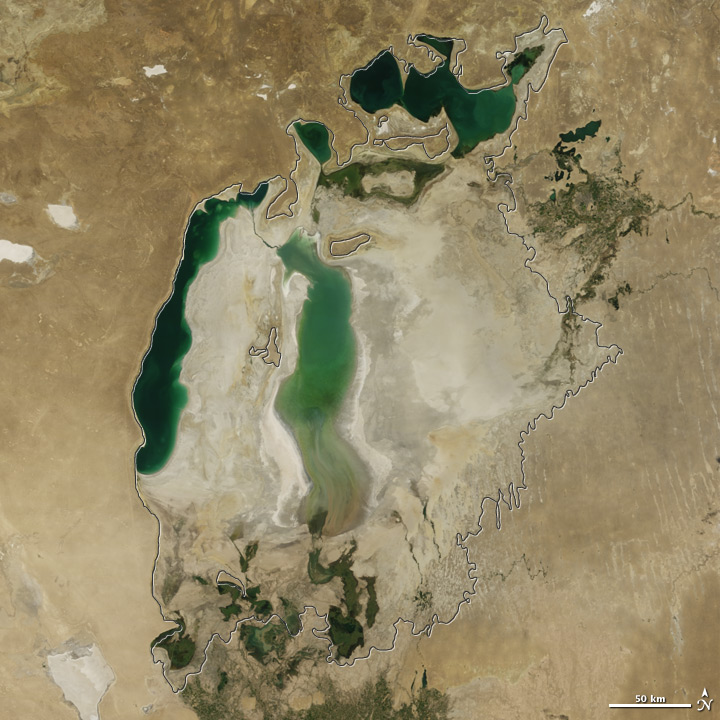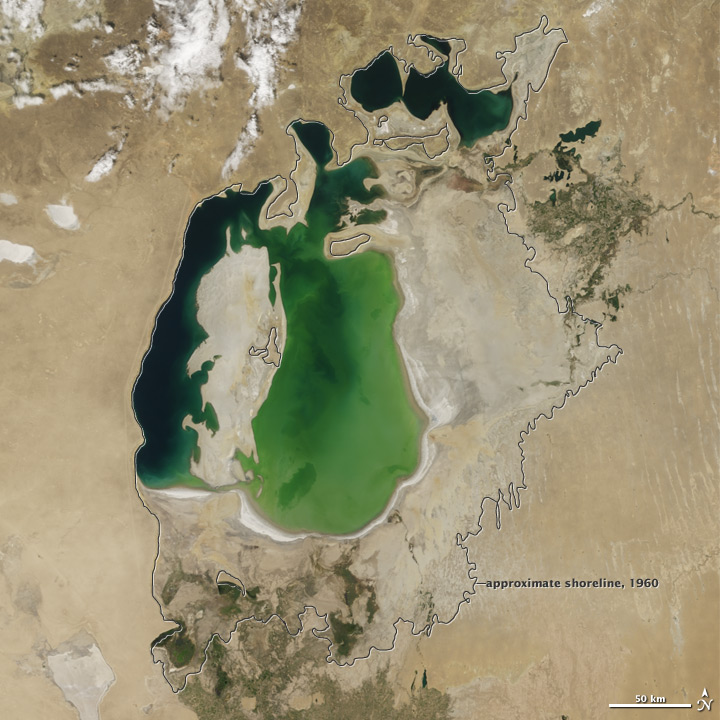When you look at a parcel of Earth’s surface at a moment in time, it can be hard to grasp the story behind the image. It’s a snapshot, a fleeting glimpse. Does it always look like that? Am I seeing this place on a normal day, an abnormal day, an everyday? Where’s the motion, the action, the dynamics?
For instance, take a look at this collection of lakes amidst the barren, salt-crusted landscape of central Asia.

The size of these freshwater lakes is compelling…tens to hundreds of kilometers long…oases of green and blue amidst the tans of the desert. These “inland seas” are impressive. That is, until you look at that same region a decade earlier (below)…or forty years earlier.

Through the lens of time, the planet comes to life. The color of the landscape changes, waters rise and fall, ice advances and retreats. The planet has vital signs. Earth Observatory’s World of Change series offers some visual vital signs for 23 different landscapes and locales on Earth, with images updated across seasons to decades, depending on the length of the satellite record.
Our newest updates include 2012 images for the Aral Sea (sampled above) and for the Hobet Mine, a mountaintop coal-mining operation in West Virginia.
What do you think we should show in future installments of World of Change? (Keep in mind that it has to be something we can see or measure via satellite.)




US coastal and major bays. Subsidence, erosion, rising water levels, and not the least, man’s activities.
Thanks.
EARTHS TWO MOST POPULOUS COUNTRIES, NAMELY CHINA AND INDIA, NEED TO BE STUDIES AS THEY HAVE THE POTENTIAL TO DESTROY THE PLANET EARTH DUE TO HUGE POPULATION AND EXCESSIVE POLLUTION.
The Yellow Stone Caldara would be a nice candidate and very important to U.S. citizens living with in the area.
The disapearing Aral lake is only one side of the coin. I would like to see a pair of comparing images spanning also about forty years to see the development of territories where the above mentioned two rivers’ water were used for irrigation.
I would like to see also images comparing the edge of ice coverage of Greenland if there is any ice/snow free areas already in September.
The barrier islands of New Jersey. The erosion of the beaches and the replnishment of the lost beaches. Dredging sand from the ocean and bays to pump onto the areas lost to normal ocean action is an ongoing, never-ending cycle. Our determination to maintain the beaches and beachfront properties is an example of our inability to conquer nature.
A corralation between heat islands (populated areas) and changing water amount and chemistry